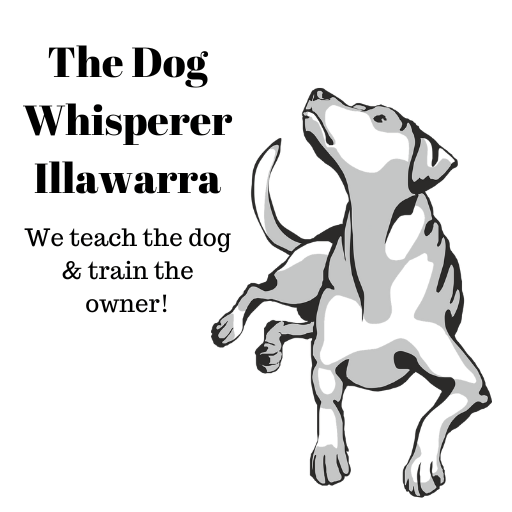Dog whispering is based around the structure and function of canine families in the wild. It is the art of communicating and interacting with dogs in a natural way – the way they communicate with each other. It is centred around the application and understanding of dog psychology – pack dynamics, body language, voice, energy, the relationships between humans and dogs, and how they communicate and coexist “culturally”. It is based on the belief that establishing hierarchy, safety and security (survival) through leadership, and providing positive outlets for energy, are fundamental to a stable and content dog.
Achieving this requires a thorough understanding of a dog’s model of the world and what fulfils and motivates them. To develop healthy relationships between humans and dogs, both parties need to benefit , and there must be effective communication. It makes sense that the focus is on helping humans to understand dog language rather than teaching dogs to understand human language.
All healthy relationships are based on mutual respect and trust, and the relationship with your dog is no different in this regard. It is essential to treat a dog with dignity and as a dog, not as a human. Dogs are pack animals by nature and require leadership from their pack leader. It is important for effective communication and overall harmony that this leadership be fair and consistent.
When your dog is happy to follow you and accepts you making decisions on their behalf, you will know you have earned their trust and respect. Real leaders prioritise the best interests of the whole pack at all times, and are trusted with their safety and survival. There is no room for ego. If we want to assume the role of pack leader, we need to constantly ask ourselves, am I worthy of following? Your character and self conduct are noticed by your dog more than you may be aware of. Just as you form opinions of those around you based on personal qualities, so does your dog. If you are relying on treats or threats to get the behaviour you want from others, rarely will you impress or earn respect.
Fundamental to this approach is addressing the state of mind that a dog is in each situation rather than focusing solely on a command or ‘trick’. The natural state of mind for any animal is to be calm, stable and present – “in the now”. It is in this calm state of mind that dogs are far more able and willing to learn and cooperate, and so to genuinely have influence over a dog, it follows that you must first have influence over their state of mind. Only when the mind is in this balanced state can effective ‘training’ begin. Teaching a dog a lot of tricks when their mind is unstable (anxious, hyperactive, obsessive) is a very limited approach and gives very limited results. By focusing on firstly creating and then rewarding a stable, balanced, respectful state of mind – as opposed to relying on treats and clickers – you will see an amazing change in your dog’s behaviour.
The above is the basic understanding of what dog whispering is and how it differs from dog ‘training’. Being a dog whisperer involves much more than this.
To be consistently effective, a dog whisperer needs to be in touch with, and sensitive to, the relationships they have formed both with themselves and others (humans and dogs). This comes from an understanding of natural principals and the interplay of mind, energy and consciousness. True wisdom and intuition (inner knowing) comes from within, and are not things which are able to be taught or learnt through academic means or by using a limited scientific approach that has been read in a book or heard in a lecture. These skills are developed through many years of experience and practise.
Dog whispering is based around the structure and function of canine families in the wild. It is the art of communicating and interacting with dogs in a natural way – the way they communicate with each other. It is centred around the application and understanding of dog psychology – pack dynamics, body language, voice, energy, the relationships between humans and dogs, and how they communicate and coexist “culturally”. It is based on the belief that establishing hierarchy, safety and security (survival) through leadership, and providing positive outlets for energy, are fundamental to a stable and content dog.
Achieving this requires a thorough understanding of a dog’s model of the world and what fulfils and motivates them. To develop healthy relationships between humans and dogs, both parties need to benefit , and there must be effective communication. It makes sense that the focus is on helping humans to understand dog language rather than teaching dogs to understand human language.
All healthy relationships are based on mutual respect and trust, and the relationship with your dog is no different in this regard. It is essential to treat a dog with dignity and as a dog, not as a human. Dogs are pack animals by nature and require leadership from their pack leader. It is important for effective communication and overall harmony that this leadership be fair and consistent.
When your dog is happy to follow you and accepts you making decisions on their behalf, you will know you have earned their trust and respect. Real leaders prioritise the best interests of the whole pack at all times, and are trusted with their safety and survival. There is no room for ego. If we want to assume the role of pack leader, we need to constantly ask ourselves, am I worthy of following? Your character and self conduct are noticed by your dog more than you may be aware of. Just as you form opinions of those around you based on personal qualities, so does your dog. If you are relying on treats or threats to get the behaviour you want from others, rarely will you impress or earn respect.
Fundamental to this approach is addressing the state of mind that a dog is in each situation rather than focusing solely on a command or ‘trick’. The natural state of mind for any animal is to be calm, stable and present – “in the now”. It is in this calm state of mind that dogs are far more able and willing to learn and cooperate, and so to genuinely have influence over a dog, it follows that you must first have influence over their state of mind. Only when the mind is in this balanced state can effective ‘training’ begin. Teaching a dog a lot of tricks when their mind is unstable (anxious, hyperactive, obsessive) is a very limited approach and gives very limited results. By focusing on firstly creating and then rewarding a stable, balanced, respectful state of mind – as opposed to relying on treats and clickers – you will see an amazing change in your dog’s behaviour.
The above is the basic understanding of what dog whispering is and how it differs from dog ‘training’. Being a dog whisperer involves much more than this.
To be consistently effective, a dog whisperer needs to be in touch with, and sensitive to, the relationships they have formed both with themselves and others (humans and dogs). This comes from an understanding of natural principals and the interplay of mind, energy and consciousness. True wisdom and intuition (inner knowing) comes from within, and are not things which are able to be taught or learnt through academic means or by using a limited scientific approach that has been read in a book or heard in a lecture. These skills are developed through many years of experience and practise.
Patricia

